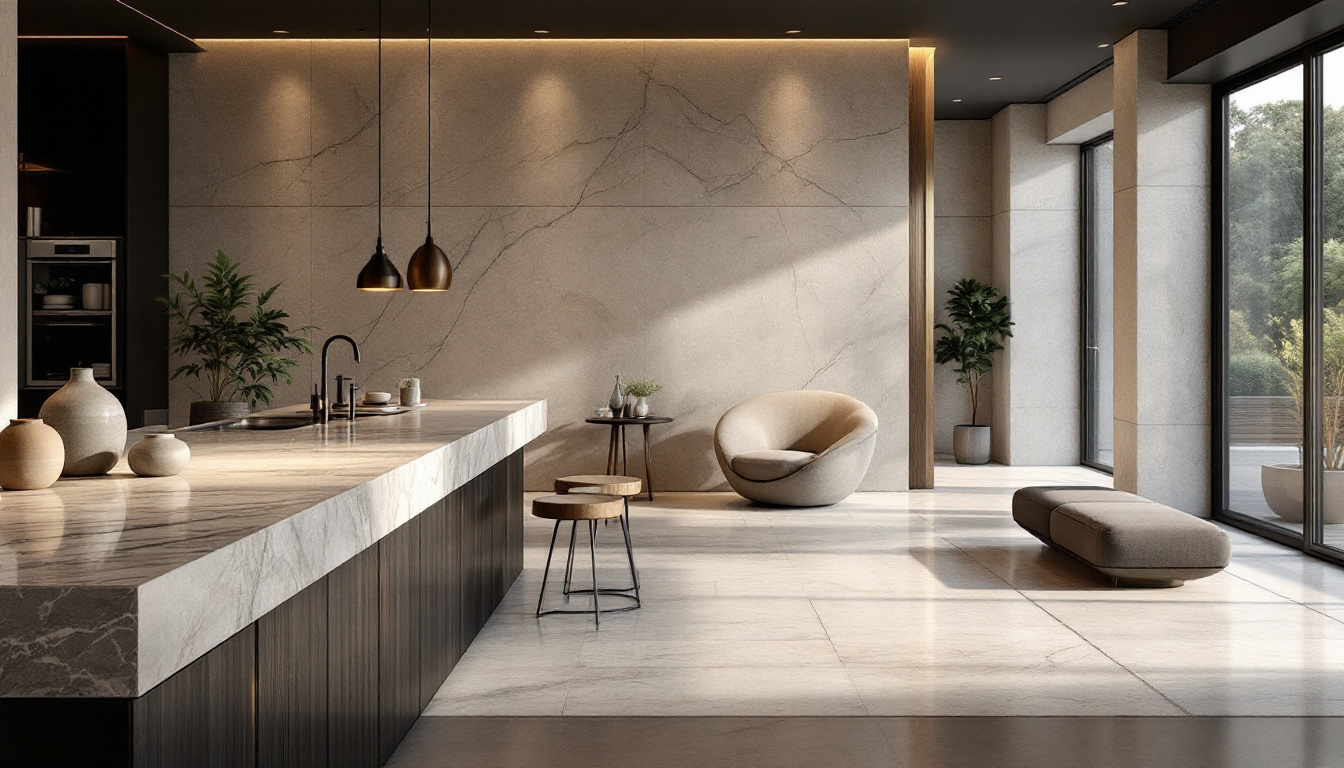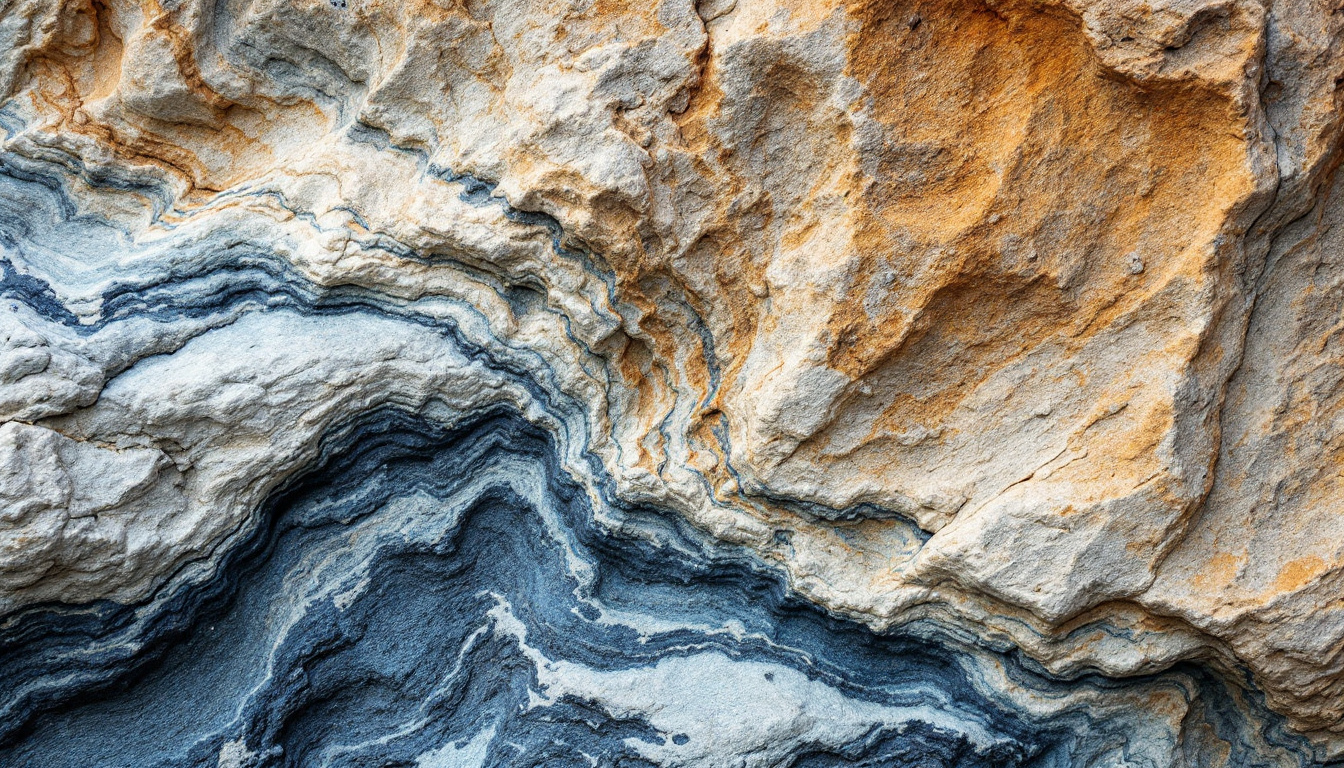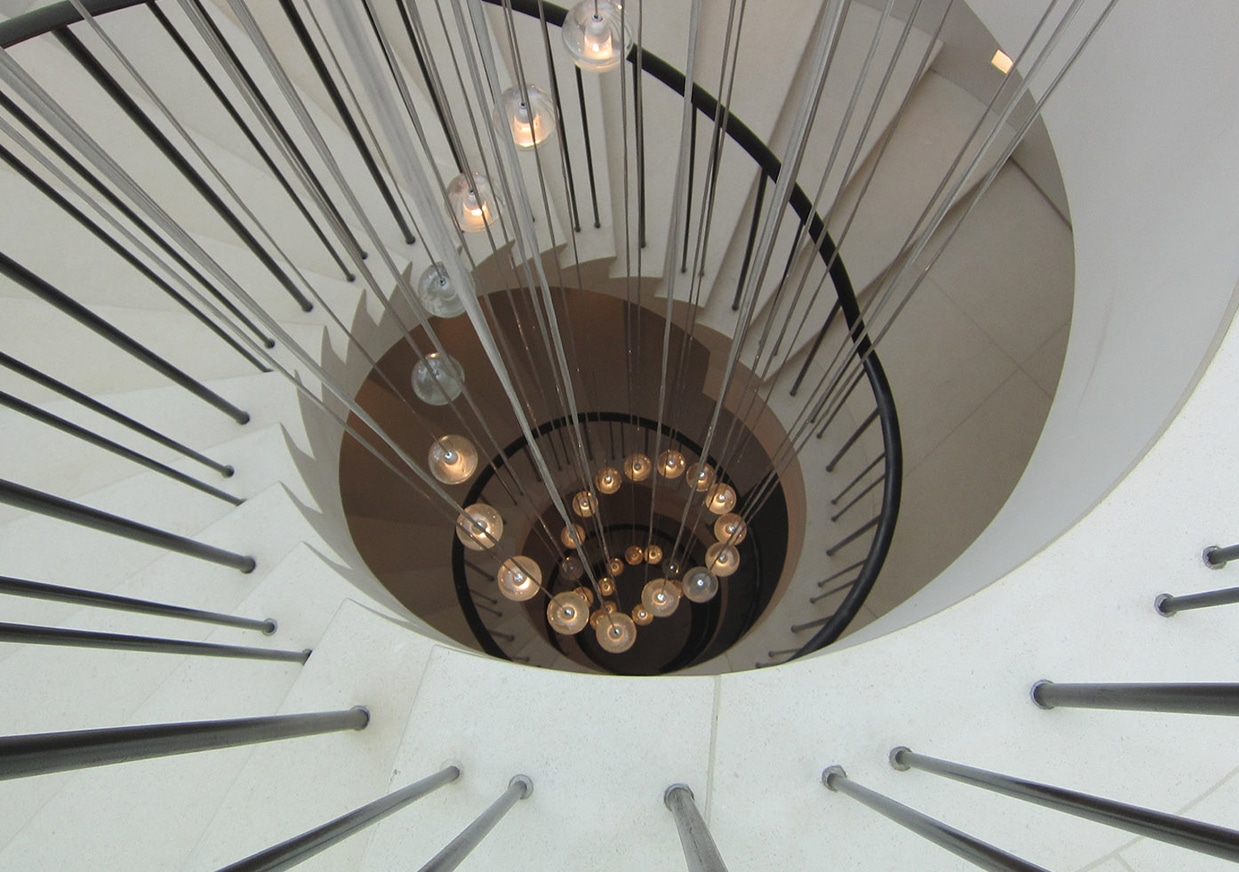
Limestone is a naturally occurring sedimentary rock that has been utilised in the construction and design industry for centuries. Its unique aesthetic appeal, versatility, and durability make it a preferred choice for bespoke natural stone interiors. This article delves into the intricate details of limestone, its formation, types, uses in interior design, and maintenance.
Understanding the nature of limestone and its characteristics is essential for architects, interior designers, and homeowners who wish to incorporate this natural stone into their design projects. The following sections provide a comprehensive exploration of limestone, offering insights into its geological formation, physical properties, and the various ways it can be used to enhance interior spaces.
Formation of Limestone
Limestone is a sedimentary rock, primarily composed of calcium carbonate in the form of the mineral calcite. It forms in clear, warm, shallow marine waters through the accumulation of shells, coral, algae, and fical debris. It can also form on the continental shelves, where calcite precipitates out of the water column and settles to the bottom, a process known as precipitation.
The formation of limestone involves a fascinating geological process that takes millions of years. Over time, the accumulation of these calcium-rich remains gets compacted and solidified into rock. The colour of limestone can vary depending on the other minerals and organic matter present during its formation.
Types of Limestone
There are several types of limestone, each with its unique characteristics, colours, and uses. The most common types include chalk, coquina, fossiliferous limestone, lithographic limestone, travertine, and tufa.
Chalk is a soft, white form of limestone often associated with deep ocean waters. Coquina is a type of limestone composed almost entirely of shell fragments. Fossiliferous limestone is popular for its visible fossil content. Lithographic limestone has a fine grain and consistent texture that makes it ideal for detailed carvings. Travertine and tufa are freshwater forms of limestone often found near hot springs.
Limestone in Interior Design
Limestone has been a staple in construction and interior design for its natural beauty and resilience. Its neutral tones and varied textures make it a versatile material that can complement various design styles, from rustic to contemporary.
Whether used for flooring, countertops, fireplaces, or decorative elements, limestone adds a touch of sophistication and timeless appeal to any space. Its ability to withstand wear and tear also makes it a practical choice for high-traffic areas.
Applications of Limestone in Interiors
Limestone can be used in various ways in interior design. One of the most common applications is for flooring. Limestone tiles offer a durable and attractive option for floors in kitchens, bathrooms, and living areas. They provide a natural, earthy aesthetic that can complement a variety of design styles.
Limestone is also commonly used for countertops in kitchens and bathrooms. Its heat resistance and easy maintenance make it a practical choice. Additionally, limestone fireplaces are a popular design feature, providing a focal point in a room while adding warmth and character.
Benefits of Using Limestone in Interiors
Using limestone in interior design offers several benefits. Firstly, it’s a natural material, which means it doesn’t contain any harmful chemicals or toxins. This makes it a healthy choice for indoor environments. Secondly, limestone is a durable material. It can withstand high traffic and resist wear and tear, making it ideal for floors, countertops, and other high-use areas.
Furthermore, limestone has a timeless appeal. Its neutral tones and natural texture can complement a variety of design styles, from rustic to contemporary. This versatility makes it a popular choice among designers and homeowners alike.
Maintenance of Limestone
While limestone is a durable material, it does require some maintenance to keep it looking its best. This includes regular cleaning with a pH-neutral cleaner and periodic sealing to protect it from stains and damage.
It’s also important to avoid using acidic or abrasive cleaners on limestone, as they can damage the surface. Spills should be cleaned up promptly to prevent staining, and mats or rugs can be used in high-traffic areas to protect the limestone floor.
Cleaning Limestone
When cleaning limestone, it’s important to use a pH-neutral cleaner. Acidic cleaners can etch the surface of the limestone, causing damage. It’s also advisable to avoid using abrasive cleaners or tools, as they can scratch the surface.
For routine cleaning, a soft, damp cloth or mop can be used. For deeper cleaning, a mild detergent or stone cleaner can be used. It’s important to rinse the surface thoroughly after cleaning to remove any residue.
Sealing Limestone
Sealing is an important part of maintaining limestone. A quality sealer can protect the limestone from stains and damage, extending its lifespan. It’s generally recommended to seal limestone annually, but the frequency can depend on the level of use and the specific type of limestone.
Before sealing, the limestone should be thoroughly cleaned and dried. The sealer can then be applied according to the manufacturer’s instructions. After the sealer has dried, the surface can be buffed with a soft cloth to enhance its shine.
Conclusion
Limestone, with its natural beauty and durability, is a versatile material that can enhance any interior space. Its unique formation process and variety of types make it a fascinating subject, not just for geologists, but also for architects, interior designers, and homeowners.
Whether used for flooring, countertops, fireplaces, or decorative elements, limestone adds a touch of sophistication and timeless appeal to any space. With proper maintenance, it can provide a durable and attractive surface that lasts for years.
Transform Your Space with A F Jones Stonemasons
Ready to elevate your interior with the timeless elegance of limestone? A F Jones Stonemasons, with over 160 years of heritage and expertise, is here to bring your vision to life. From bespoke designs to intricate installations, our skilled team combines traditional craftsmanship with cutting-edge technology to deliver exceptional quality and service. Whether you’re envisioning grand architectural projects or intimate custom pieces, we cater to all scales with precision and care. Visit our Oxfordshire showroom to discover the possibilities, or make an enquiry today and let us help you harness the true potential of natural stone in your space.


